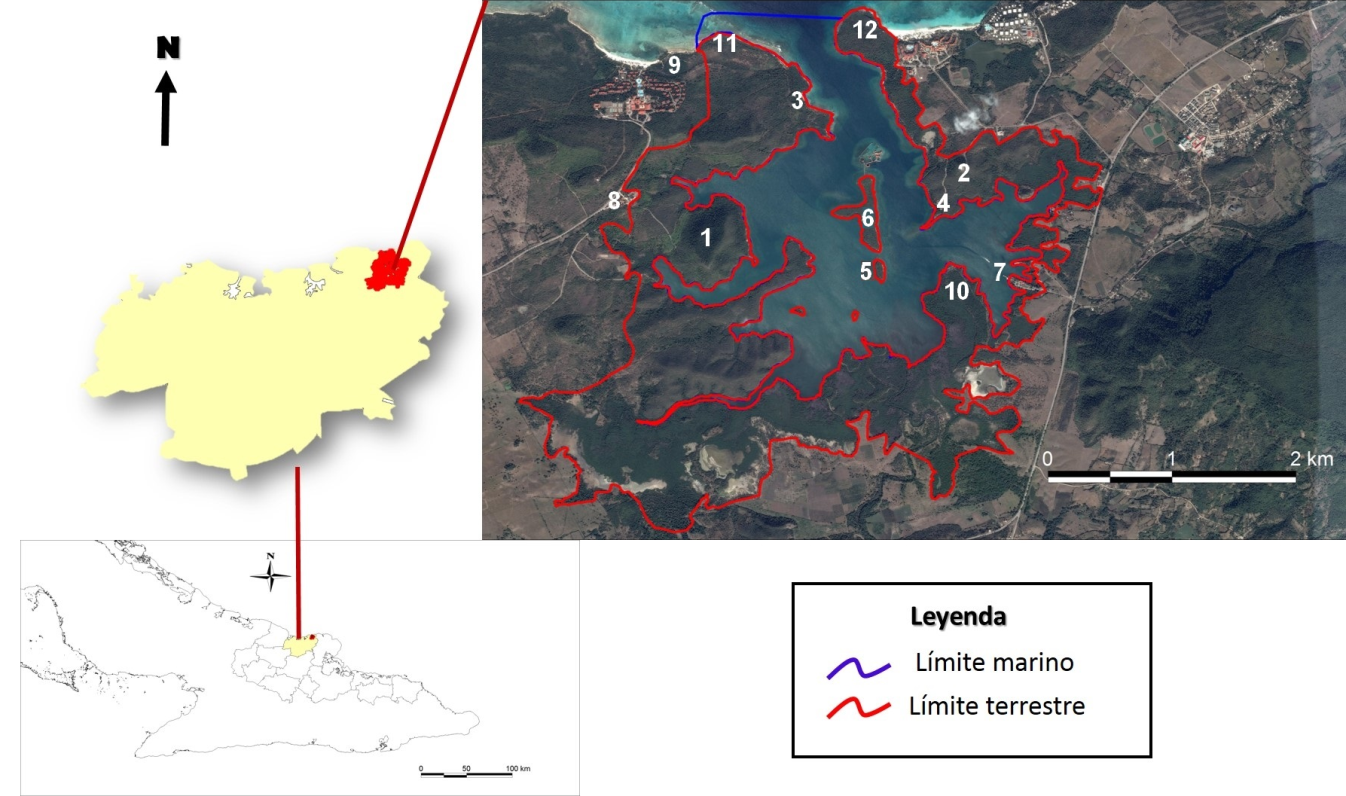Ecosystem services of the Protected Natural Landscape Bahía de Naranjo, Holguín province, Cuba
Main Article Content
Abstract
The sustainability of tourism activity requires management that allows, from an environmental point of view, the conceptualization of the ecosystem services that provide its development. Insufficient knowledge of these services limits the most appropriate alternatives for their protection and conservation. The research carried out in the Bahía de Naranjo Protected Natural Landscape aims to identify and prioritize the area ecosystem services; this is a key information for the biodiversity sustainable management. The results include: new knowledge about the ecosystem services and characterization of threats for their conservation and sustainable use. Ecosystem services were identified and rankeng according to it' s importance for the protected area's development objectives. The selected ecosystem services were established taking into account the Millennium Ecosystem Assessment classification and the Total Economic Value. The following methods were also used: analytical, documentary research, interview, and direct observation. Of the 30 identified ecosystem services, seven of them are priorities for the area's development plans. The result provides updated information useful to strengthen decision-making mechanisms in protected area management, where biodiversity and ecosystem services are included in development planning.
Article Details

This work is licensed under a Creative Commons Attribution-NonCommercial 4.0 International License.
References
Casals C. 2014. Evaluación de impacto ambiental en senderos terrestres. Estudio de caso Sendero Roca Azul. Tesis de Maestría. Facultad de Ciencias Económicas y Administración, Universidad de Holguín. 75 pp.
Franco J.A., Rueda A., Güidi A, Fernández A., Hernández A., Walker J. & Menéndez M. (2005). Propuesta de plan de manejo de la faja terrestre de la Bahía de Naranjo. Informe técnico No. 5835011003. Grupo Empresarial Geocuba. Agencia Holguín. Taller de Estudios Medioambientales. Inédito
Gómez J. L., Peña Y., González P. A, Carmenate W., Bonet W., Hernández D, Esnard B. & Cantillo R. (2017). Caracterización de la biodiversidad y delimitación de derroteros del área protegida “Bahía de Naranjo”. Informe de Servicio Científico -Técnico. Centro de Investigaciones y Servicios Ambientales de Holguín (CISAT-CITMA).
Kosmus. M, I. Renner, S. Ultrich. 2012. Integración de los servicios ecositémicos en la planificación del desarrollo. Eshborn y Quito, Ecuador.
MEA, Millenium Ecosystem Assessement (2005). Island Press, Washington. D.C., en http://www.ecosystemvaluation.org/glossary.htm.
Vega A., A. Fernández., E. Córdova., D. Hernández., P. González., C. Peña., R. Rodríguez., B. Esnard., R. Ayra., A. Rueda., H. Rodríguez., E. Reynaldo., J. Cruz., P. Cruz., Z. Frutos., A. Reyes.2021. Bases para el manejo sostenible de la biodiversidad en áreas costeras protegidas de la provincia de Holguín. Informe de proyecto de investigación. Centro de Investigaciones y Servicios Ambientales de Holguín (CISAT-CITMA).
Walker J., Rojas M.M., Rodríguez J. & Yero R.M. 2001. Plan de ordenamiento territorial gran parque turístico Cristóbal Colon. Primera etapa. Direccion Provincial de Planificación Física, Holguín.

